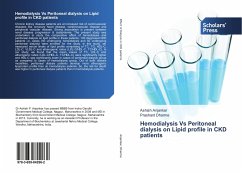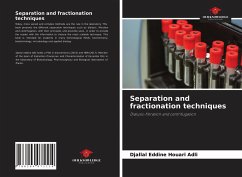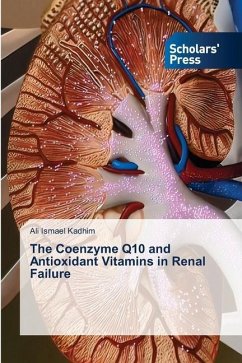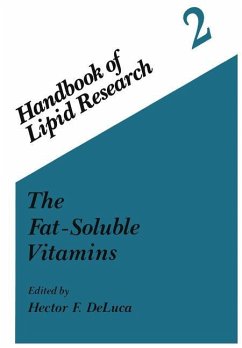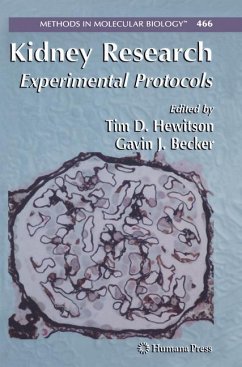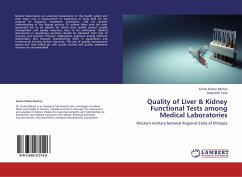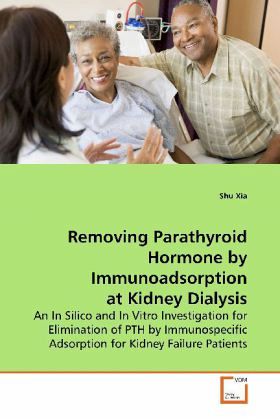
Removing Parathyroid Hormone by Immunoadsorption at Kidney Dialysis
An In Silico and In Vitro Investigation for Elimination of PTH by Immunospecific Adsorption for Kidney Failure Patients
Versandkostenfrei!
Versandfertig in 6-10 Tagen
39,99 €
inkl. MwSt.

PAYBACK Punkte
20 °P sammeln!
The restoration of normal parathyroid hormone (PTH) levels for kidney failure patients has to date proven to be a very challenging clinical problem. Middle molecular weight toxins such as PTH are poorly dialyzed, and drug therapies require weeks to months to lower serum PTH levels. Based on the characteristic of high specific affinity between antigen and antibody, a chromatographic column with packing coated by monoclonal antibody placed in series with a conventional hemodialyzer has been designed to reduce PTH levels to normal within one dialysis session. A mathematical model of the modified ...
The restoration of normal parathyroid hormone (PTH)
levels for kidney failure patients has to date
proven to be a very challenging clinical problem.
Middle molecular weight toxins such as PTH are
poorly dialyzed, and drug therapies require weeks to
months to lower serum PTH levels. Based on the
characteristic of high specific affinity between
antigen and antibody, a chromatographic column with
packing coated by monoclonal antibody placed in
series with a conventional hemodialyzer has been
designed to reduce PTH levels to normal within one
dialysis session. A mathematical model of the
modified dialysis circuit of the form of a single
delay differential equation, whose approximately
analytical solution was obtained emoplying a Padé
approximation, was developed which reproduces an in
vitro experiment with high accuracy, and indicates
that the immunosorptive column will be efficacious
in lowering PTH levels when scaled up to clinical
scenarios. Process intensification of the modified
dialyzer circuit was also investigated by
functionalizing the lumenal surfaces of the dialyzer
cartridge itself.
levels for kidney failure patients has to date
proven to be a very challenging clinical problem.
Middle molecular weight toxins such as PTH are
poorly dialyzed, and drug therapies require weeks to
months to lower serum PTH levels. Based on the
characteristic of high specific affinity between
antigen and antibody, a chromatographic column with
packing coated by monoclonal antibody placed in
series with a conventional hemodialyzer has been
designed to reduce PTH levels to normal within one
dialysis session. A mathematical model of the
modified dialysis circuit of the form of a single
delay differential equation, whose approximately
analytical solution was obtained emoplying a Padé
approximation, was developed which reproduces an in
vitro experiment with high accuracy, and indicates
that the immunosorptive column will be efficacious
in lowering PTH levels when scaled up to clinical
scenarios. Process intensification of the modified
dialyzer circuit was also investigated by
functionalizing the lumenal surfaces of the dialyzer
cartridge itself.



